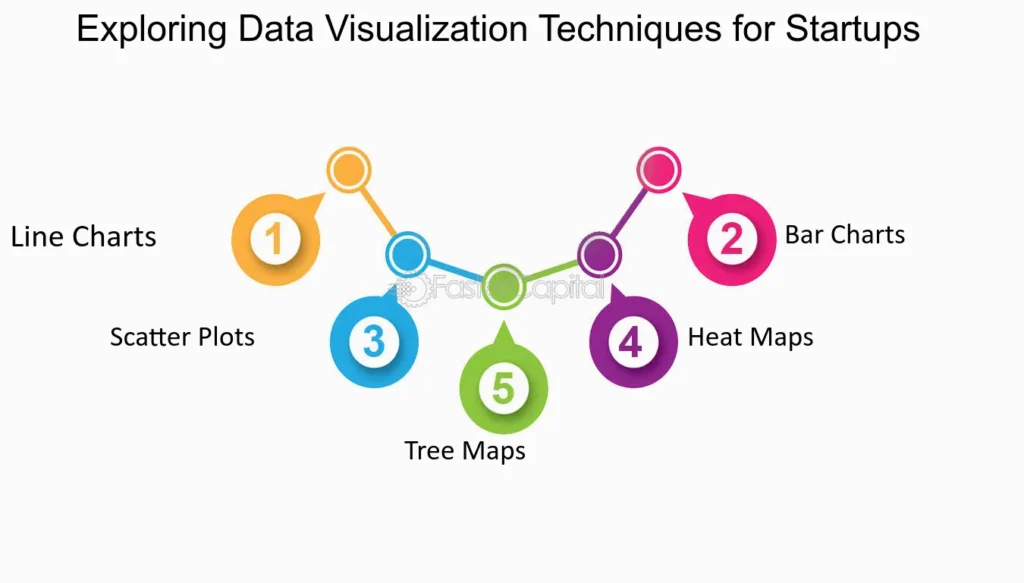In the realm of data visualization, treemap charts stand as a testament to the marriage of aesthetics and information. These nested rectangles, often bursting with color, provide a hierarchical view of your data, making complex datasets more digestible. But what happens when we push beyond the basics? This piece delves deeper into the art and science of treemap charting. This guide will illuminate the intricate dance of choosing harmonious color schemes that enhance data comprehension, infusing interactivity that engages users, and incorporating animations that breathe life into static numbers.
Unfolding the art of data presentation has always been an intriguing task. Exploring advanced methods including color coding, interactivity, and animation can significantly boost the insights we derive from data. Below, we dive into the world of treemap charts and discuss how these techniques can be efficiently implemented. Keep reading!
Unearthing the Complex World of Treemaps: A Brief Overview
A treemap, by nature, is a practical and visually appealing visualization tool that portrays hierarchical (tree-structured) data. Displaying complex data into different-sized rectangles and nested blocks, treemaps make large datasets easier to understand.
The size and color of the blocks represent particular variables, allowing us to quickly perceive patterns and draw comparisons. By displaying sizes and proportions instead of numbers, treemaps provide immediate visual cues about relative importance and hierarchy.
The magic of treemaps lies in their ability to handle legions of data points without losing simplicity and readability. They can be used in various fields, from finance, network disk usage to visualizing data in social and health sciences.
However, creating an impactful treemaps chart requires technical skills and a creative mindset. A good understanding of color schemes, interactivity features, and animation can significantly elevate the effectiveness of these visualizations.
Maximizing Visual Impact: The Art of Selecting Color Schemes in Treemap Chart

Source: zebrabi.com
Accurate color schemes in treemaps are essential for communicating the right information. Colors should be selected based on the nature of the data, aiming to represent numerical or categorical data accurately.
When using color schemes, consideration should be given to consistency, contrast, and hierarchy. Consistent color use ensures that similar data is instantly recognizable throughout the chart, while contrast efficiently differentiates data points. The hierarchy of colors should mimic the order of the data for easy comprehension.
Diverging and sequential color schemes aid in representing numerical variables. For categorical variables, qualitative color schemes prove efficient. Remember, a well-selected color scheme not only enhances the visual appearance of the charts but also facilitates accurate data interpretation.
The Power of Touch: Incorporating Interactivity in Treemap Designs
Interactivity is a powerful feature that can amplify the user experience and understanding of treemaps. Users can click or hover over individual blocks for detailed information buried within the data.
In an interactive treemap, the addition of tooltips showing detailed insights when users hover over a rectangle can be highly beneficial. It provides an added layer of details without cluttering the chart.
Including drill-down functionality in the chart allows users to explore data hierarchies more deeply. It enables the user to click on a specific block and visually break it down into smaller blocks, each signifying a sub-category of the clicked block.
Interactivity does not only engage users; it also provides a pathway to exploring complex data that may be too overwhelming to display at once.

Source: fastercapital.com
Bringing Treemaps to Life: The Influence of Animation in Data Representation
While treemaps themselves are a powerful static visual tool, incorporating animation can bring data to life by adding time as a dynamic variable. It helps to display how data has changed over a specific period and foresee upcoming trends.
Visual continuity in animated treemaps assists viewers in tracking changes from one state to another. The animation flow should be smooth and natural, not jarring or too abrupt, to maintain user attention and comprehension.
Consider that while animation can enhance a visualization’s appeal and understanding, overdoing it or incorporating it without purpose can lead to cognitive overload or disengagement. Thus, animation in treemaps should be used wisely, ensuring it contributes to data understanding and does not merely serve as an aesthetic feature.
Altogether, mastering the art of treemap chart with advanced techniques brings an insane amount of value to the table. Overall, with the eloquent selection of color schemes, the intelligent incorporation of interactivity, and the sensitive use of animation, we can make our data speak volumes, resonating more profoundly with its intended audience.



